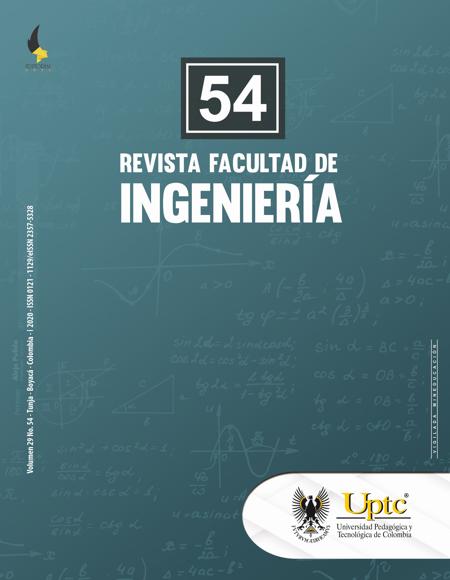Microwave Frequency Characterization of Barium Titanate Films Obtained Via Sol-Gel

Abstract
The present work focuses on the structural, morphological and dielectric characterization of barium titanate films (BTO or BaTiO3 due to its chemical formula) deposited by spin coating on crystalline silicon (Si) substrates and CPW resonators using the Sol-Gel technique with a Ba/Ti molar ratio of 0.5/0.5. The coplanar waveguides were manufactured on alumina substrates (Al2O3) with 3 mm of gold (Au) metallization using the laser ablation technique. The scanning electron microscopy (SEM) with X-ray energy dispersion spectrometry (EDS) showed the existence of a BTO film with an elementary composition of 14.62% barium and 5.65% titanium, with a thickness of 0.77 mm measured using the profilometric mode of the atomic force microscopy (AFM). Dielectric characterization was carried out by comparing the frequency response (parameter S21) of a CPW resonator with deposited BTO film and another reference resonator (without film) using a network vector analyzer (VNA). These measurements are compared in turn with computational simulations to obtain the dielectric properties. For the BTO film was determined a relative dielectric constant constant (er) of 160 with a loss tangent (Tand) of 0.012 for a frequency of 3.60 GHz. The dielectric constant constant and the ferroelectric property of the material produced are quite promising for applications in microwave circuits, such as miniaturization and tuning.
Keywords
dielectric constant, ferroelectrics, microwave materials, loss tangent, Sol-Gel, thin films
References
[1] M. E. Lines, and A. M. Glass, Principles and applications of ferroelectrics and related materials. Oxford, Englad: Oxford University Press, 2001.
[2] G. Alvarez, R. Zamorano, R. Font, J. Portelles, C. Román, M. Castellanos, and J. Heiras, "Mediciones del perfil de absorción de potencia a microondas en materiales ferroeléctricos y magnetoferroeléctricos," Superficies y Vacío, vol. 18 (1), pp. 11-15, 2005.
[3] S. H. Baek, J. Park, D. M. Kim, V. A. Aksyuk, R. R. Das, S. D. Bu, D. A. Felker, J. Lettieri, V. Vaithyanathan, S. S. N. Bharadwaja, N. Bassiri-Gharb, Y. B. Chen, H. P. Sun, C. M. Folkman, H. W. Jang, D. J. Kreft, S. K. Streiffer, R. Ramesh, X. Q. Pan, S. Trolier-McKinstry, D. G. Schlom, M. S. Rzchowski, R. H. Blick, C. B. Eom, "Giant piezoelectricity on Si for hyperactive MEMS," Science Journals, vol. 334 (6058), pp. 958-961, 2011. https://doi.org/10.1126/science.1207186.
[4] A. Feteira, D. C. Sinclair, I. M. Reaney, Y. Somiya, and M. T. Lanagan, "BaTiO3‐Based Ceramics for Tunable Microwave Applications," Journal of the American Ceramic Society, vol. 87 (6), pp. 1082-1087, 2004. https://doi.org/10.1111/j.1551-2916.2004.01082.x.
[5] R. Schafranek, A. Giere, A. G. Balogh, T. Enz, Y. Zheng, P. Scheele, R. Jakoby, and A. Klein, "Influence of sputter deposition parameters on the properties of tunable barium strontium titanate thin films for microwave applications," Journal of the European Ceramic Society, vol. 29(8), pp. 1433-1442, 2009. https://doi.org/10.1016/j.jeurceramsoc.2008.08.034.
[6] P. W. M. Jacobs, E. A. Kotomin, A. Stashans, and I. Tale, "Theoretical simulations of hole centres in corundum crystals," Modelling and Simulation in Materials Science and Engineering, vol. 2(1), pp. 109, 1994. https://doi.org/10.1088/0965-0393/2/1/008.
[7] H. Jiang, J. Zhai, and X. Yao, "Microwave dielectric properties of BaTiO3–SrZnP2O7 composite ceramics for tunable microwave applications," Journal of Physics D: Applied Physics, vol. 42(22), pp.225404, 2009. https://doi.org/10.1088/0022-3727/42/22/225404.
[8] H. M. Wong, B. Luo, L. C. Ong, K. Yao, and Y. X. Guo, "Characterization of dielectric properties for PZN-PMNPT ferroelectric thin films at microwave frequencies," in Asia-Pacific Microwave Conference, Japan, 2006, pp. 579-582. https://doi.org/10.1109/APMC.2006.4429492.
[9] L. F. Chen, C. K. Ong, C. P. Neo, V. V. Varadan, and V. K. Varadan, Microwave Electronics: Measurement and Materials Characterization, West Sussex, England: John Wiley & Sons, 2004. https://doi.org/10.1002/0470020466.
[10] O. Harizanov, A. Harizanova, and T. Ivanova, "Formation and characterization of sol–gel barium titanate," Materials Science and Engineering: B, vol. 106 (2), pp. 191-195, 2004. https://doi.org/10.1016/j.mseb.2003.09.014.
[11] C. J. Brinker, and G. W. Scherer, Sol-gel science: the physics and chemistry of sol-gel processing. San Diego, California: Academic press, 2013.
[12] S. Sharma, M. Tomar, N. K. Puri, and V. Gupta, "Ultraviolet radiation detection by barium titanate thin films grown by sol–gel hydrothermal method," Sensors and Actuators A: Physical, vol. 230, pp. 175-181, 2015. https://doi.org/10.1016/j.sna.2015.04.019.
[13] D. Tripkovic et al., "Inkjet patterning of in situ sol–gel derived barium titanate thin films," Ceramics International, vol. 42 (1), pp. 1840-1846, 2016. https://doi.org/10.1016/j.ceramint.2015.09.148.
[14] R. Balachandran, H. K. Yow, M. Jayachandran, W. Y. W. Yusof, and V. Saaminathan, "Particle size analysis of Barium Titanate powder by slow-rate Sol-gel process route," in IEEE International Conference on Semiconductor Electronics, Kuala Lumpur, Malaysia, 2006, pp. 406-409. https://doi.org/10.1109/SMELEC.2006.381091.
[15] J. I. Marulanda, M. Cremona, R. Santos, M. C. R. Carvalho, and L. S. Demenicis, "Characterization of SrTiO3 thin films at microwave frequencies using coplanar waveguide linear resonator method," Microwave and Optical Technology Letters, vol. 53 (10), pp. 2418-2422, 2011. https://doi.org/10.1002/mop.26233.
[16] J. Y. Hsu, J. Y. M. Lee, J. J. Wang, L. Y. Yeh, J. T. Lai, and J. Gong, "Electrical properties of barium titanate ferroelectric thin films fabricated by rf magnetron sputtering for memory devices application," in International Electron Devices and Materials Symposium, Hsinchu, Taiwan, 1994, pp. 11. https://doi.org/10.1109/EDMS.1994.86387.